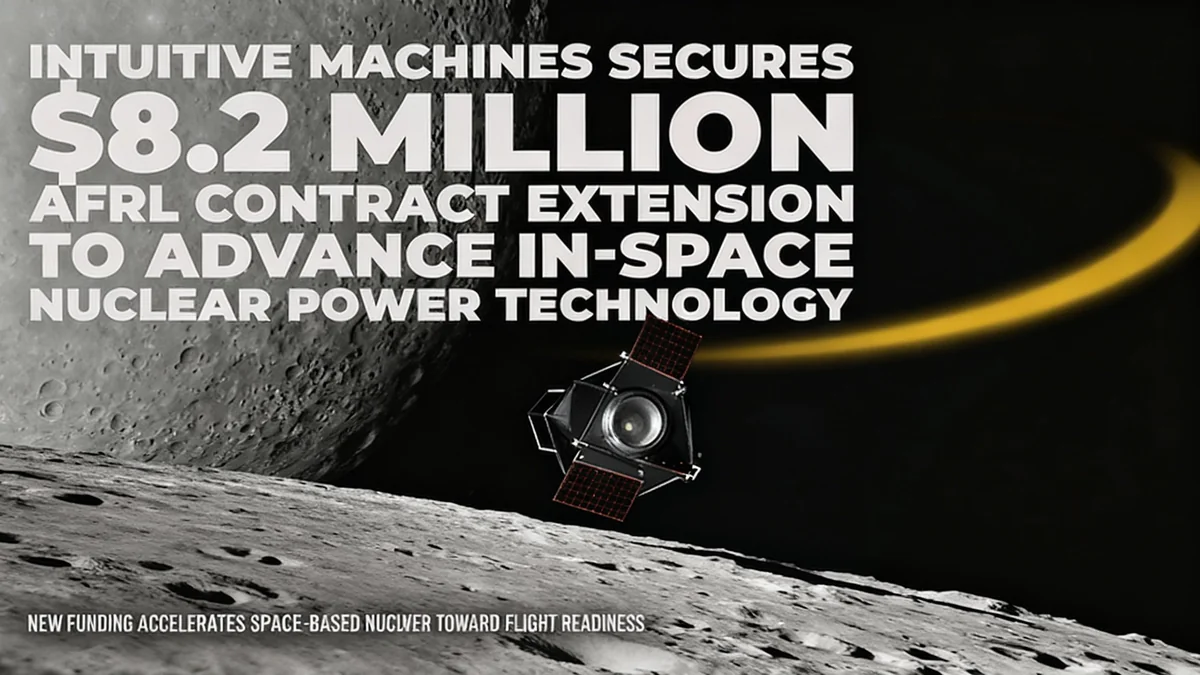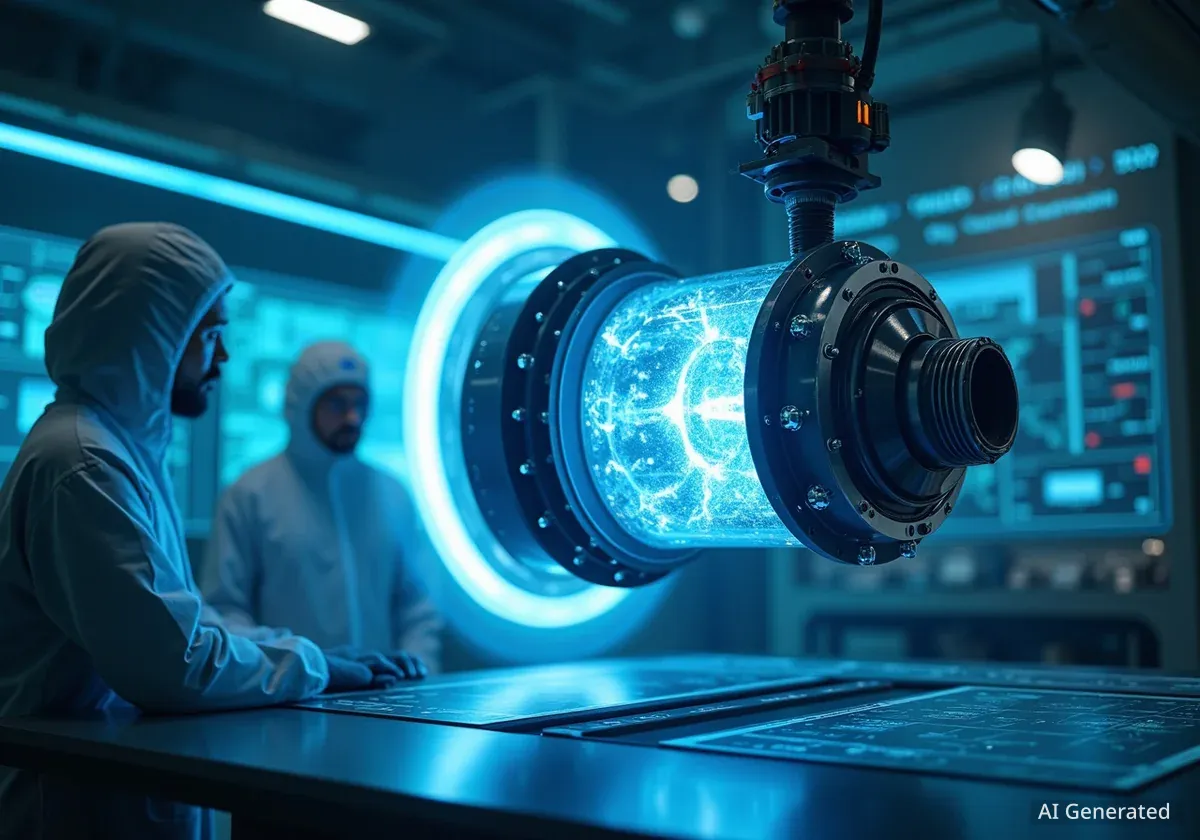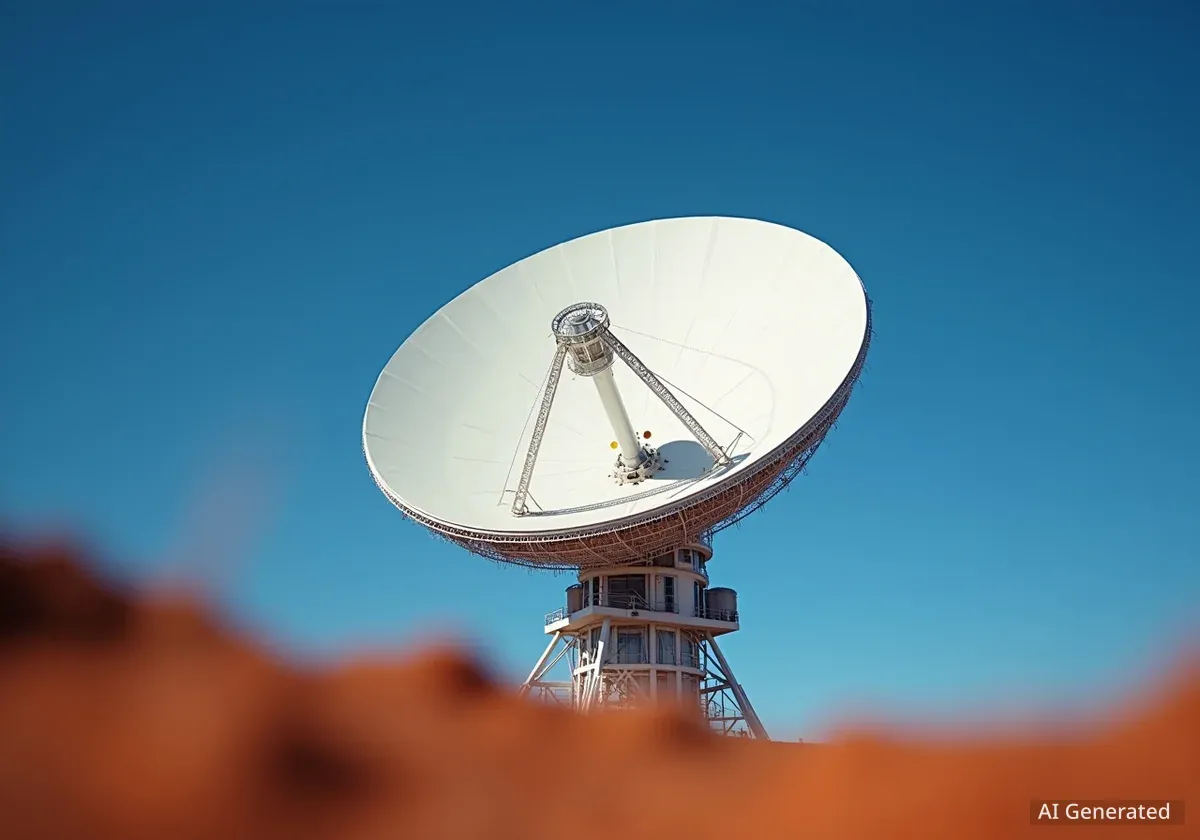Intuitive Machines has received an $8.2 million contract extension from the U.S. Air Force Research Laboratory (AFRL) to advance the development of nuclear power systems for space. The new funding is aimed at preparing compact nuclear power technology for flight readiness, a critical step toward enabling longer and more complex missions on the Moon and in deep space.
Key Takeaways
- Intuitive Machines received an $8.2 million contract extension from the U.S. Air Force Research Laboratory (AFRL).
- The funding accelerates the development of a Stirling-based nuclear power system for spacecraft.
- This technology aims to overcome the limitations of solar power, especially during the two-week lunar night.
- The project is now moving from the design phase to building flight-ready hardware for a demonstration in space.
Overcoming Solar Power's Limitations in Space
Space missions have traditionally relied on solar power, which has proven effective for many applications. However, this energy source presents significant challenges for long-duration missions in harsh environments, such as the lunar surface.
During the lunar night, which lasts approximately two weeks, temperatures can plummet below -200 degrees Fahrenheit (-129 degrees Celsius). Without sunlight, solar-powered systems cannot operate unless they are equipped with large, heavy battery banks or other supplemental power sources. These additions increase the mass and complexity of a mission.
The Challenge of the Lunar Night
The extreme cold and prolonged darkness of the lunar night pose a major obstacle for sustainable operations on the Moon. Standard equipment can freeze and become inoperable. Continuous power is essential for rovers, habitats, and scientific instruments to survive and function through this period. Nuclear power offers a consistent energy source independent of sunlight.
Intuitive Machines is developing a compact nuclear power system that uses a Stirling engine. This technology converts heat from a radioisotope source directly into electricity, providing a continuous and reliable power supply regardless of environmental conditions.
"This award moves us from design to flight hardware, which is a critical step toward proving that compact nuclear power systems can survive and perform in space," said Tim Crain, Ph.D., co-founder and chief growth officer for Intuitive Machines.
From Design to Flight-Ready Hardware
The new $8.2 million in funding builds upon a previous $9.5 million award from the AFRL. Under the initial phase, Intuitive Machines successfully completed a Preliminary Design Review for its Stirling-based power conversion system in September.
With this contract extension, the company will now focus on preparing the system for an actual flight demonstration. This marks a significant transition from theoretical design to the production of physical hardware intended for use in space.
What is a Stirling Engine?
A Stirling engine is an external combustion engine that operates by cyclic compression and expansion of air or other gas (the working fluid) at different temperatures, such that there is a net conversion of heat energy to mechanical work. For space applications, the heat is provided by a radioisotope source, making it a highly efficient and reliable power converter.
The goal is to mature the technology to a point where it is considered space-flown and ready for integration into commercial, civil, and national security missions. Achieving this milestone is essential for gaining the trust of mission planners and securing future contracts.
The START Experiment and Future Applications
A key part of this development is the Stirling Technology spAce Research experimenT (START). This experiment is designed to test the Stirling power conversion technology in the actual environment of space. The system will be flown on the International Space Station (ISS) National Laboratory.
On the ISS, the hardware will be exposed to the unique conditions of space, including microgravity and radiation, which can cause conventional power systems to degrade. The experiment aims to raise the technology's readiness level from a prototype to a proven, space-flown system.
Potential Uses for Compact Nuclear Power
The capabilities offered by a reliable, compact nuclear power source are extensive and could enable new types of missions. Potential applications include:
- National Security: Powering stealth spacecraft that need to operate without large, highly visible solar arrays.
- Lunar Infrastructure: Ensuring generators and systems remain functional during the prolonged darkness and extreme cold of the lunar night.
- Deep Space Navigation: Powering Position, Navigation, and Timing (PNT) beacons that can support sustained navigation on and around the Moon.
This technology is seen as a cornerstone for building a sustainable human presence on the Moon and beyond.
Supporting a Broader Vision for Lunar Infrastructure
The work on this AFRL program aligns with Intuitive Machines' larger strategic goals. The company, which successfully landed its Nova-C lander on the Moon in 2024, aims to transition from a lunar delivery service to a provider of long-term lunar infrastructure.
In addition to the AFRL project, Intuitive Machines has been studying higher-powered nuclear fission systems under a contract with the Department of Energy, with funding from NASA's Fission Surface Power (FSP) project. The FSP initiative is focused on developing technologies that could one day power a lunar base.
According to Tim Crain, the progress made under the AFRL program strengthens the company's position for future involvement in major initiatives like NASA's FSP.
"Maturing dynamic power conversion and control technologies that scale is how we evolve from a lunar delivery to a commercial infrastructure service provider on the Moon," Crain stated. This long-term vision positions reliable energy as the foundation for a permanent off-world economy.





